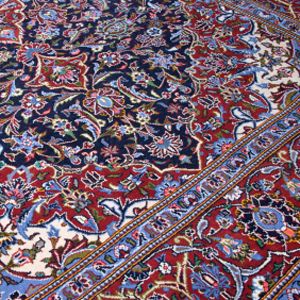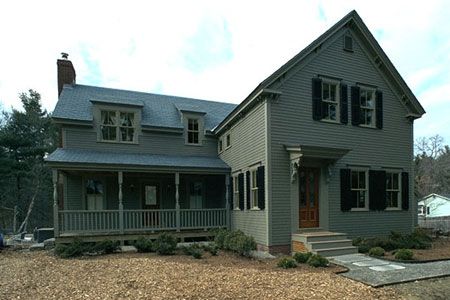Oriental rugs are functional pieces of art that can add character to a room and serve as a lasting investment. With countless designs, sizes, and origins to choose from, we recommend approaching the selection process with knowledge and care.
This guide will walk you through the key factors to consider when choosing an Oriental rug, from understanding its unique qualities to evaluating its worth and caring for it properly.

Understanding Oriental Rugs
Oriental rugs are intricate works of art with rich histories and cultural significance. Before diving into the selection process, it’s important to grasp what defines an Oriental rug and appreciate its historical value.
What Defines an Oriental Rug
The term “Oriental” refers to the rug’s origin rather than a specific style, encompassing a wide range of patterns and weaving techniques unique to different regions.
An Oriental rug is a hand-knotted carpet traditionally made in Asian countries such as Iran, China, India, Turkey, Pakistan, and Nepal. Its intricate designs, vibrant colors, and high-quality natural materials define it.
Historical Significance and Cultural Value
Oriental rugs have been prized possessions for centuries, often passed down through generations as family heirlooms. Each rug tells a story through its patterns and motifs, reflecting the cultural heritage of its place of origin.
From the geometric designs of Turkmen rugs to the floral patterns of Persian carpets, these textiles offer a glimpse into the artistic traditions of diverse cultures. Recognizing this historical and cultural value adds depth to appreciating Oriental rugs beyond their decorative appeal.
How Can You Evaluate the Quality of Oriental Rugs?
Assessing the quality of an Oriental rug involves examining several key factors that contribute to its overall value and durability.
Knot Density and Weave Tightness
While knot count is a partial measure of rug quality, it’s not the sole indicator of a rug’s worth. As Steve Boodakian, an expert with decades of experience in the rug business, notes, “In over 25 years in the business of buying, selling, and appraising Oriental rugs, I have counted the knots on less than 100 of them. There are more important things to judge by.”
The weave should be fine enough to clearly express the motifs of the design. A bold geometric pattern may have fewer knots per square inch than an elaborate floral design, which might require 300 knots per square inch or more.
Wool Quality and Dye Fastness
The quality of wool used in an Oriental rug is crucial for its resilience and lasting beauty. High-quality wool should feel soft yet springy to the touch. The dyes used should be colorfast, meaning they won’t bleed or fade over time. To test dye fastness, gently rub a damp white cloth over the rug’s surface—if color transfers easily, it may indicate poor-quality dyes.
Handmade vs. Machine-Made Rugs
Authentic Oriental rugs are handmade, which contributes to their uniqueness and value.
To distinguish between handmade and machine-made rugs, examine the back of the rug. Handmade rugs will show slight irregularities in the knots, while machine-made rugs have a uniform appearance. Additionally, handmade rugs often have fringes that extend the rug’s foundation, whereas machine-made rugs have fringes sewn separately.
What Are the Different Types of Oriental Rugs?
Oriental rugs encompass a wide variety of styles, each with its own distinct characteristics.
Persian Rugs
Persian rugs, originating from Iran, are often considered the gold standard of Oriental rugs. Known for their intricate floral and geometric designs, these rugs come in a wide range of styles, from the bold patterns of Heriz rugs to the delicate motifs of Isfahan carpets. They also feature high-quality wool and intricate weaving techniques.
Indian and Pakistani Rugs
Rugs from India and Pakistan have gained popularity in recent years due to their high quality and competitive pricing. These rugs often feature designs inspired by Persian and Mughal art, with rich colors and intricate patterns. Many Indian and Pakistani rugs are made with high-quality New Zealand wool, resulting in durable and lustrous carpets.
Turkish and Anatolian Rugs
Turkish rugs, also known as Anatolian rugs, are renowned for their bold geometric patterns and vibrant colors. These rugs often feature stylized floral motifs and central medallions. Turkish kilims, flat-woven rugs without pile, are popular for their versatility and unique designs.
Chinese and Tibetan Rugs
Chinese and Tibetan rugs offer a distinct aesthetic that often incorporates symbolic motifs and Art Deco influences. Chinese rugs typically feature simple, elegant designs with lots of open space, while Tibetan rugs are known for their bold colors and abstract patterns. These rugs are often made with high-quality wool and sometimes incorporate silk for added luster.
How To Determine the Value of an Oriental Rug
The value of an Oriental rug is influenced by several factors, including its age, condition, origin, and artistic merit.
Age and Condition
Generally, older rugs in good condition are more valuable than newer ones. However, the condition is crucial—a well-maintained newer rug may be more valuable than a poorly preserved antique. Look for signs of wear, repairs, or restoration when evaluating an older rug. Some patina and minor wear can add character, but significant damage will decrease value.
Country of Origin
The country of origin can significantly impact a rug’s value. Traditionally, Persian rugs have been considered the most valuable, but high-quality rugs from other countries have gained recognition in recent years. As Boodakian points out, “The quality of rugs from India, Pakistan, China, Turkey, Tibet and Nepal has improved in the past 20 years to the extent that many Persian-design carpets from these countries are finer than the Iranian originals. “
Rarity and Artistic Merit
Unique or rare designs, particularly those from renowned weaving centers or master weavers, can command higher prices. A rug’s artistic merit, including the intricacy of its design, color harmony, and overall aesthetic appeal, also contributes to its value. Remember that current design trends can influence demand and pricing for certain styles of rugs.
Where Can You Shop for Oriental Rugs?
Finding the right place to purchase your Oriental rug is as important as choosing it.
Specialized Rug Dealers
Established rug dealers offer expertise and a wide selection and may even provide services like in-home trials and cleaning.
As Boodakian advises, “Look for established firms that rely on repeat business for their success. Stores that specialize in Oriental rugs and have a wide selection of styles, qualities and prices are a great place to start.” These dealers can provide valuable insights into the rugs’ origins, quality, and care.
Antique Shops and Estate Sales
Antique shops and estate sales can be treasure troves for finding unique, vintage Oriental rugs. While these venues may offer the chance to discover rare pieces at cheap prices, shoppers need a keen eye and expertise to assess quality and authenticity. Be prepared to do thorough research and possibly consult an expert before making a purchase.
Online Marketplaces
Online platforms have expanded the market for Oriental rugs, offering a vast selection and often competitive pricing. However, shopping online requires extra caution. Ensure the seller provides detailed photos, including close-ups of its front and back, and a comprehensive description of the rug’s size, condition, and origin. Look for sellers with good reputations and clear return policies.
How to Care for Your Oriental Rug
Proper care and maintenance are essential to preserve the quality and value of your Oriental rug.
Cleaning and Maintenance
Regular vacuuming prevents dirt from settling into the rug’s fibers. Use a vacuum without a beater bar to avoid damaging the materials. For spills, blot immediately with a clean, damp cloth. Avoid rubbing, which can spread the stain and damage the fibers.
For wool rugs especially, we recommend getting your rug deep cleaned by a professional every few years.
Proper Storage Techniques
Clean the rug thoroughly before storage and ensure it’s completely dry. Roll the rug with the pile facing inward, wrap it in breathable material like cotton or muslin, and store it off the ground in a cool, dry place. Avoid plastic wrapping, which can trap moisture and lead to mildew.
Professional Restoration Services
For valuable or antique rugs, professional restoration services can address wear, tears, or other damage. Skilled restorers can repair fringes, reweave damaged areas, and even reconstruct missing parts of the design.
While restoration can be costly, it’s often worthwhile for preserving the value and beauty of a cherished rug.

